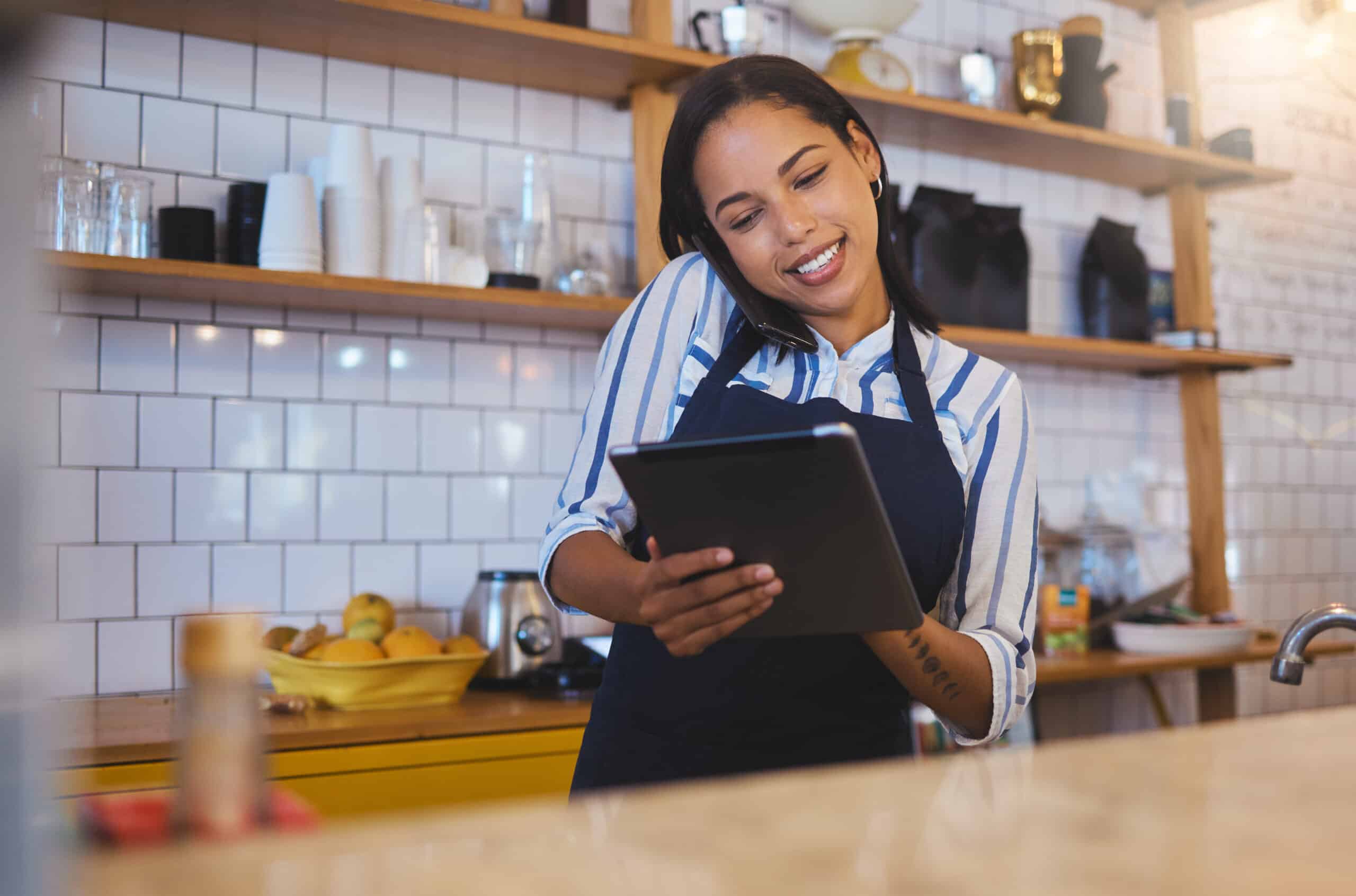Most industries, from banking to car sales, are going through a digital transformation these days. Companies are incorporating software applications, artificial intelligence, and smart machines to manage more business and customer interactions. And restaurants are no different. In fact, 50% of U.S. operators plan to deploy new technology in the next two to three years. For some eateries, the labor shortage is accelerating the move to automation, but regardless of the motivation, automation will soon be an essential element of success. Let’s look ahead and see how technology may be transforming the restaurant industry in the next few years.
More Restaurants Will Employ Proven Technology
Today’s automation is helping restaurants survive in a relentlessly difficult labor environment. These tried and true applications include self-service payments, digital ordering, and contactless pickup and delivery. And they’ll become more mainstream as increasing numbers of businesses hop on the bandwagon.
Restaurants will be offering more channels for taking orders as well. Online apps, tabletop touchpads, kiosks, and QR code-driven digital menus improve ordering accuracy and increase operational efficiency. It’s no surprise that digital ordering has grown by triple digits in the last couple of years.
And customers like these conveniences, especially for fast casual and informal dining. Patrons are less sure they’ll appreciate automation in more formal, sit-down establishments, but given the business advantages, we’re likely to see even the most traditional restaurants adopting proven tech for front of house (FOH) and back of house (BOH) tasks.
Robots Will Be Lending a Hand
Companies that are ready to push beyond today’s technology will be experimenting with robots. Robots have the advantage of being able to do repetitive or difficult jobs, such as working a fry station, without needing a break. They can also help with FOH by bringing out food and bussing tables. Robot automation gives wait staff extra time to interact with customers, offer upsells, and handle more tables at once.
Restaurant robots incorporate cutting edge tech such as artificial intelligence, machine learning, computer vision, and data analytics to take on basic jobs with optimal efficiency and results. Some large chains are already running trials with robots. Jack in the Box, for example, is working with Miso Robotics to work fry stations and dispense drinks.
As delivery has become more popular for restaurants after the pandemic, robots are ready to help there, too. Autonomous vehicles specially designed for delivering food or other purchases are starting to roll. The autonomous delivery company Nuro, for example, has started a limited pilot with Domino’s Pizza.
Looking forward, vendors specializing in restaurant robotics envisage an environment where robots integrate with other automation, point of sale (POS) systems, and BOH applications. Together, robots and other automation will generate an end-to-end data picture from which restauranteurs can predict buying trends, automate inventory management, and improve product consistency across locations. They may even enable companies to run the increasingly popular ghost kitchens with no staff.
With all their advantages, robots aren’t perfect. Many products are still in development and need a lot of training and adjustment to get jobs done right. They also require supervision, maintenance, and occasional repair, which means restaurants will need some robot-savvy help either on staff or on call. And like everything else, job seekers with robotics expertise are in short supply, so these new skills may be difficult to find.
Inventory Management Will Get Easier
In industries like retail, inventory management software has long played an essential role in keeping shelves stocked and enabling the next-day deliveries we all love. And restaurants are starting to adopt this technology as well. These systems help ensure ingredients are available as needed. They track real-time stock levels, help staff use food before the expiration date, and alert managers when supplies are low. Some can also place orders automatically.
Like the robots, inventory management systems can integrate with POS applications and employ machine learning to improve inventory efficiency, predict buying trends for popular recipes, and cut food waste. And as with robots, automated inventory management applications save time because managers don’t have to count stockrooms or manually calculate and send purchase orders.
Meal Kiosks Will Offer Remote Service
Kiosks are already popular in fast casual dining, but they will not long be limited to taking orders. Some companies, such as the startup Now Cuisine, are developing kiosks which serve complete meals. These all-in-one machines are designed for offices, hospitals, and apartment buildings where people need to grab a quick bite. They offer restaurants a channel for serving customers outside the normal dining establishment and increasing brand awareness.
As with other automation, the meal kiosks help ease labor struggles and keep wait times down during rush hour. But as a new technology, the return on investment isn’t clear yet, and the machines haven’t been widely tested for quality, consistency, and customer acceptance.
Change Management Will Become a Priority
Coming technology will change the way customers interact with restaurants and the way restaurants run their businesses. More of the business will necessarily involve sophisticated equipment, computer-run automation, and data analytics. As a result, some of the traditional jobs will fade away, but new positions, new skills, and new operating procedures will come into play.
Successful companies will have to manage all that change while maintaining the standards and quality customers expect. So before bringing in those fancy robots, your team needs good performance management systems. For example, consider implementing digital audits to keep employees focused on corporate priorities even as their daily work evolves. And adopt tools such as digital checklists that help managers and owners easily implement new procedures and training.
Lay the Foundation for Tech Success with MeazureUp’s Digital Audit and Checklist Solutions
With MeazureUp’s digital checklists and audit solutions, you can ensure every location is delivering on brand standards every day. Staff have step-by-step instructions for completing essential tasks; managers have mobile audit forms they can complete in minutes; owners and district managers have real-time performance data and historical trends to help improve efficiency and optimize procedures.
With MeazureUp’s applications, you can quickly adjust task lists and audit questions as your team adapts to new automation. And you don’t have to wait for the future to experience the benefits:
- Get rid of labor-intensive paper checklists.
- Increase checklist and audit completion rates.
- Help employees succeed and minimize mistakes.
- Give district managers real-time performance data.
- Help managers catch, address, and follow-through on infractions before they become problems.
- Capture data for insightful reporting and analysis.
- Increase quality and consistency while lowering costs.
Learn how MeazureUp makes it easy to keep performance standards high no matter what the future holds.



